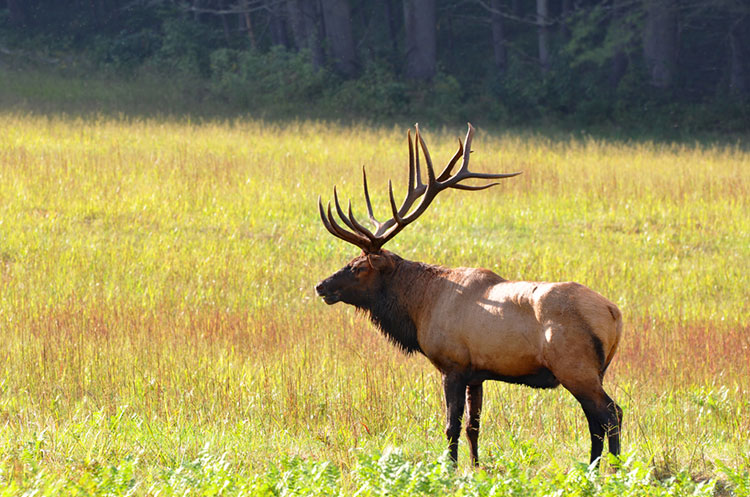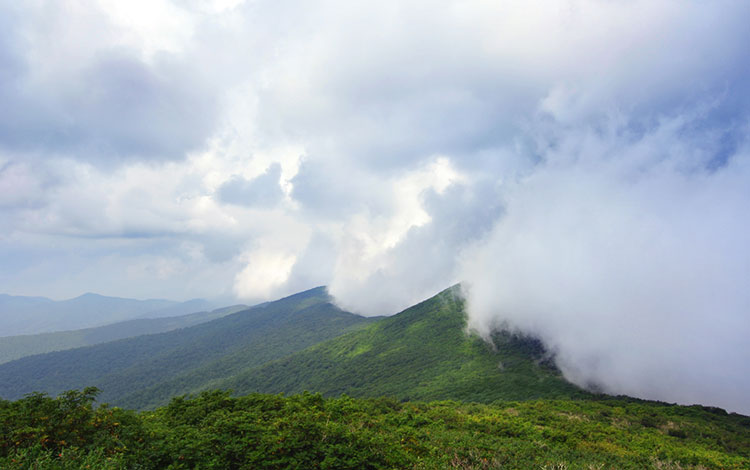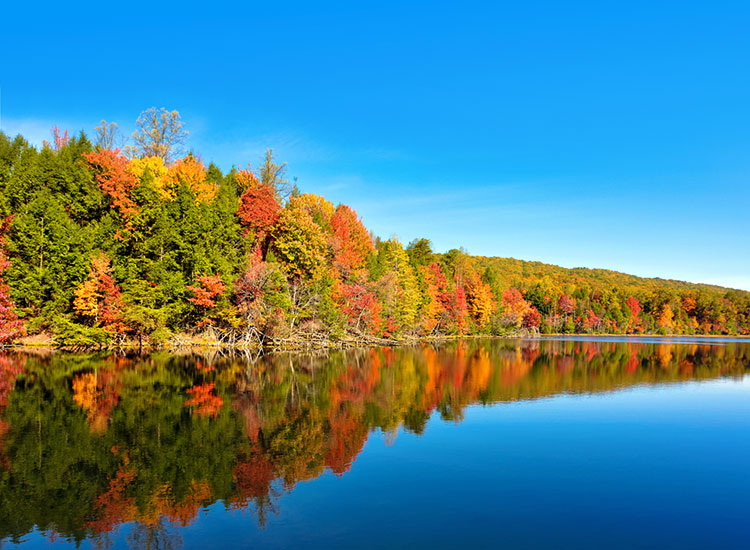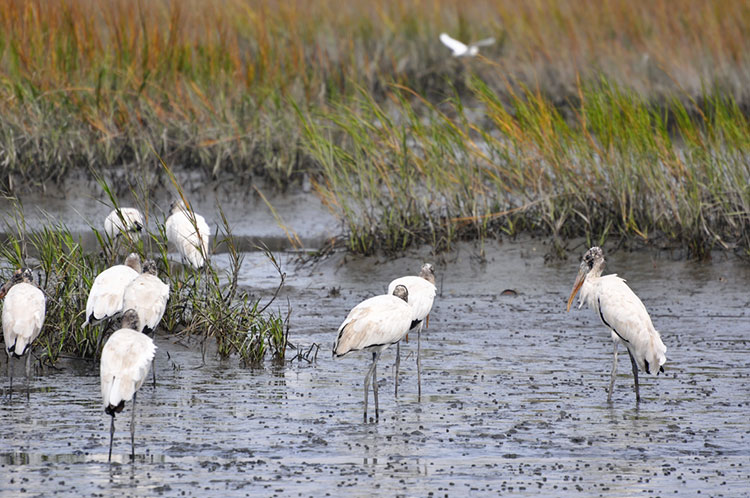FEATURED TRAVEL PHOTOGRAPHY BY DAVID CARILLET
The United States is a nation of diversity in more ways than one. It is both ethnically and multiculturally diverse in its inhabitants. It supports climates that range from tropical to arctic, and boasts geography that spans forested mountains, barren deserts, and harsh, frozen tundra. It has also been identified as one of seventeen megadiverse countries, that is, a country that contains at least 5,000 species of endemic plants and borders marine ecosystems.

Wildflowers along the Blue Ridge Parkway in the Great Craggy Mountains.

Historic 19th century Carter Shields Cabin at Cades Cove, Tennessee.

Bull elk during rutting season (mating season) at Cataloochee Valley in the Great Smoky Mountains of North Carolina.
The Cherokee silversmith Sequoyah, born in the Cherokee town of Tuskegee near present day Knoxville, Tennessee, created the first written Native American syllabary language in 1821. It proved so effective that the literacy rate of the Cherokee Nation quickly surpassed that of European-American settlers. Sequoyah is one of only a handful of people in recorded world history who single-handedly developed an effective writing system. His work inspired the creation of 21 more syllabaries used by more than 65 languages around the world in Canada, West Africa, and China.

Grassy, sprawling plains at Cades Cove valley in Tennessee.

Crabtree Falls and colorful autumn foliage in Marion, North Carolina.

Royal terns at Indialantic Beach in Florida.
The Wright brothers, Orville and Wilbur, are often credited with the invention and flight of the first successful airplane in the world, which took place at Kitty Hawk, North Carolina on December 17, 1903. Their invention of three-axis control to manage the pitch, roll, and yaw of an aircraft in order to maintain its equilibrium is still the standard to this day for fixed-wing aircraft.

Aerial tramway up to the ski area at Ober Gatlinburg in Tennessee.

Hotels and vacation rentals along a stretch of Myrtle Beach in South Carolina.

North Carolina Appalachian landscape with wildflowers and spruce.
The U.S. Federal Government paved the way for the invention of the internet in the 1960s when it sought research for packet network systems, which led to the creation of ARPANET, the first switching network. American computer scientists Vinton Cerf and Bob Kahn developed a set of communications protocols known as the Transmission Control Protocol and Internet Protocol, or TCP/IP, which is used to pack and unpack data and route it from one point to another across a network. ARPANET adopted TCP/IP in 1983, making it a networking standard from which a web of interconnected networks (internet) would be developed in the years to come.

Huge storm clouds rolling over the mountaintops at Craggy Gardens in North Carolina.

Warm reflections of autumn in Kingsport Reservoir at Bays Mountain Park in Tennessee.

Holes in the frozen surface of Lake Powhatan in the Pisgah National Forest of North Carolina.
Lake Superior, the world's largest freshwater lake by surface area, has its own tide and contains 10% of the world's fresh surface water. To put a number to it, that's 3-quadrillion gallons (11.4-quadrillion liters), or enough to cover all of North and South America in one foot of fresh water.

City of Chattanooga, TN along the Tennessee River as seen from Chickamauga Dam.

East Fork Overlook during an exceptional year for autumn color in North Carolina.

Wood storks foraging for crabs at Huntington Beach State Park.
The United States has more than 6,700 national parks or protected areas, the first of which to be established was Yellowstone National Park in 1872 in the state of Wyoming. The U.S. also owns the infamous title of the country with the largest number of extinct animals on the IUCN Red List, with well over 200 species extinct and almost as many critically endangered.

Wild deer grazing in a meadow at Cades Cove.

Laurel Falls, a cascading waterfall on the Appalachian Trail in Hampton, Tennessee.

Rocky cliff ledge on the Grandfather Trail at Grandfather Mountain in North Carolina.
The United States is home to the tallest mountain in the world. Although Mount Everest is the world's tallest mountain above sea level at 8,848 m (29,029 ft), Mauna Kea in Hawaii is the tallest when measured from its oceanic base, which gives it a height of more than 10,000 m (33,000 ft).

Golden sunrise and wild sea oats at Myrtle Beach.

American alligator lurking in the water at Huntington Beach State Park in South Carolina.

One of the many wooden tressel bridges on the Virgina Creeper Trail in Damascus, Virginia.